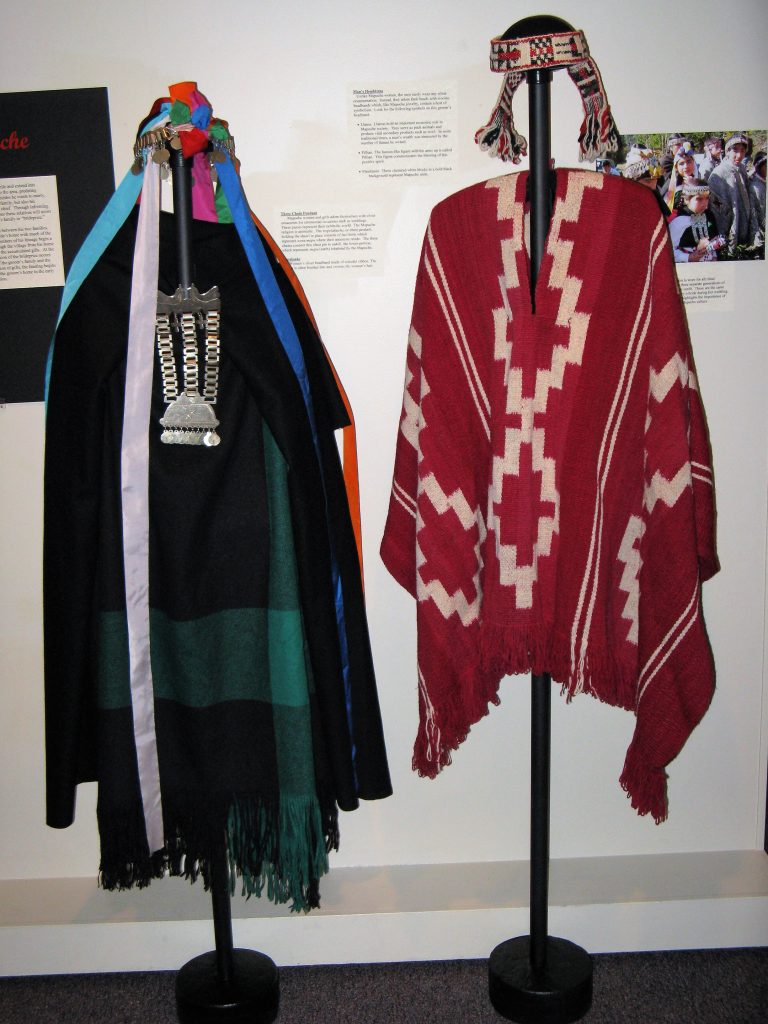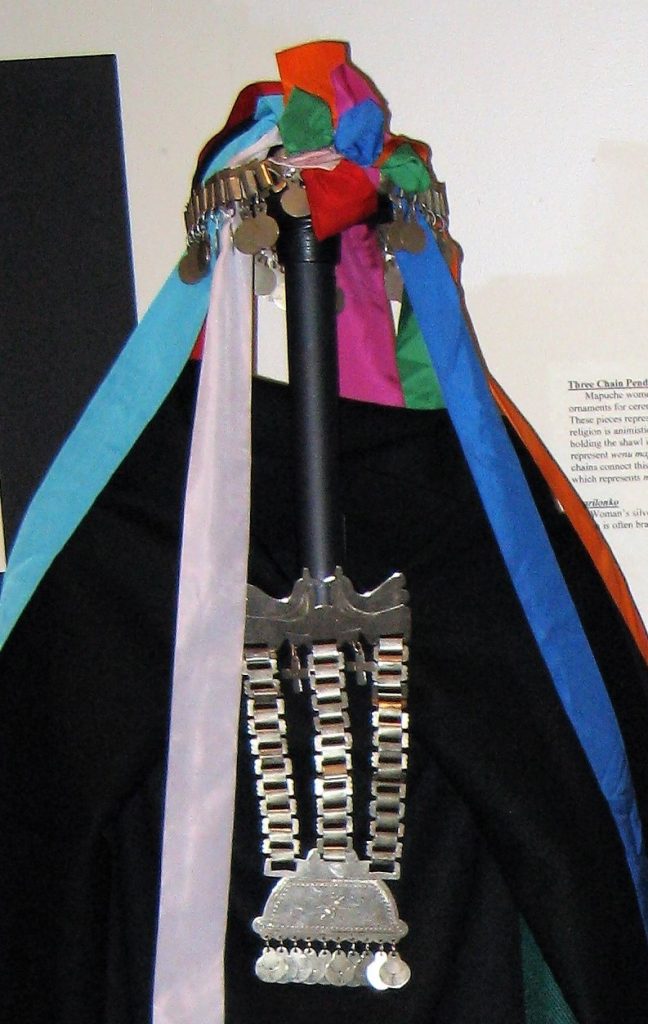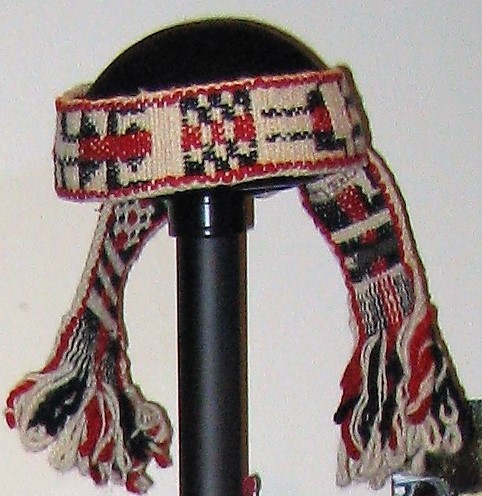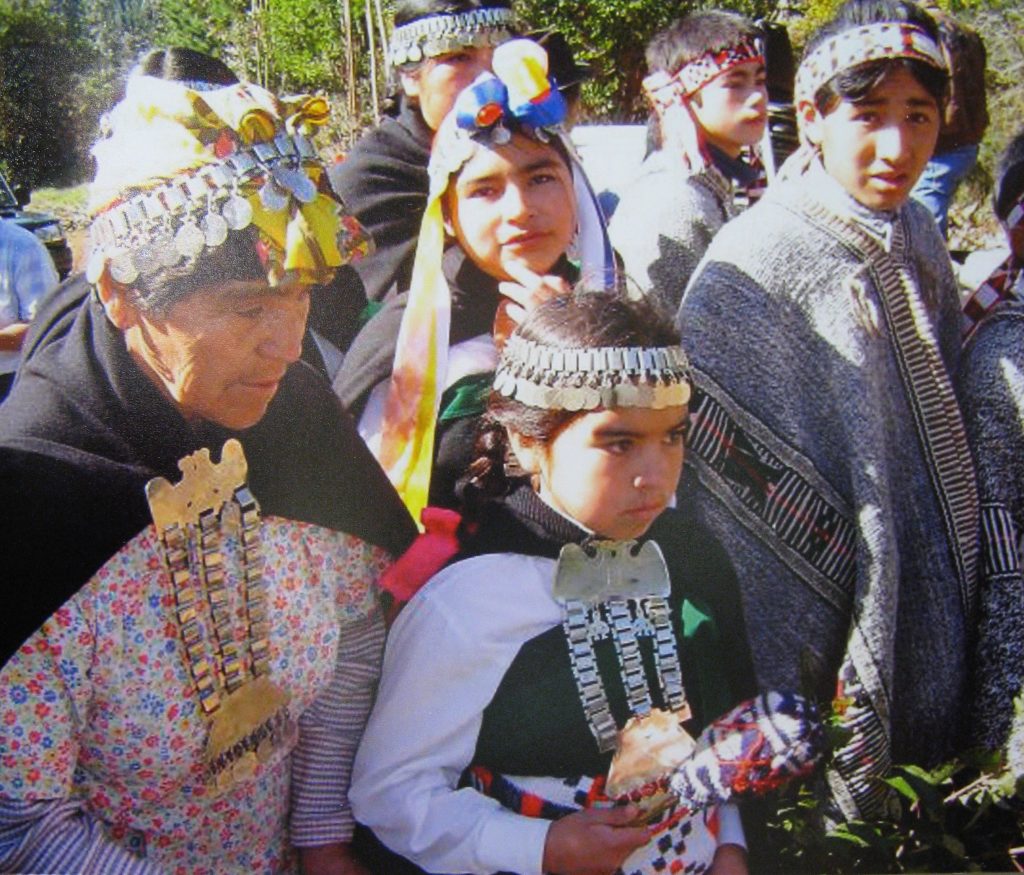Mapuche
The Mapuche are the indigenous people of south-central Chile and southwest Argentina and the most populous indigenous group in South America. When a Mapuche man decides to marry, he presents his plan to not only his direct family, but also his extended family, and even the chief. By informing his extended family, the groom-to-be hopes these relatives will assist him in accumulating gifts for the bride’s family known as bride price.
After much planning and negotiation between the two families, the formal wedding ceremony occurs near the bride’s home with much of the community present. The groom and members of his family begin a slow and distinguished procession through the village from his home to that of the bride, carrying with them the accumulated gifts. At the bride’s house a dramatic public discussion of the brideprice occurs in order to show off both the wealth of the groom’s family and the value of the bride. After the presentation of gifts, feasting begins at the bride’s home and progresses to the groom’s home in the early morning hours for even more celebration.


Women’s Accessories
Mapuche women and girls adorn themselves with silver ornaments for ceremonial occasions such as weddings. These pieces represent their symbolic world. The trapelakucha, or chest pendant, holding the shawl in place consists of two birds which represent wenu mapu where their ancestors reside. Three chains connect this to the lower portion, or sükill, which represents mapu, the earth inhabited by the Mapuche.
The woman’s silver headband, known as trarilonko, is decorated with colorful ribbon. The ribbon is often braided into and crowns the woman’s hair.
Men’s Headdress
Unlike Mapuche women, men rarely wear any silver ornamentation. Instead, they adorn their heads with woolen headbands which, like Mapuche jewelry, contain many important cultural symbols. Look for the following symbols on this groom’s headdress:
- Llamas hold an important economic role in Mapuche society. They serve as pack animals and produce vital secondary products such as wool. In more traditional times, a man’s wealth was measured by the number or llamas he owned.
- The human-like figure with his arms up is called Pillan. The figure communicates the blessing of these powerful spirits.
- The clustered white blocks on a bold black background are a symbol known as Mauñimin representing Mapuche unity.


Traditional Dress
Mapuche ceremonial dress is worn for all ritual occasions. Here you can see three generations of women all dressed in the same outfit. These are the same basic costumes that are worn by a bride during her wedding. The lack of obvious variations highlights the importance of being part of a community in Mapuche culture.
